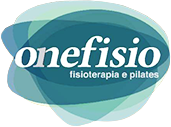23 nov How to Identify and Cope With Your PTSD Triggers
Content
What to Do if You internal and external triggers If you relapse after treatment, don’t panic. It’s important to recognize when your thoughts are leading in a direction that could make sobriety more difficult. Different levels for the study of addiction range from molecular to subjective . An article in Psychology Today cites studies that show most relapses happen within the first 90 days of abstinence, which is why attending a rehab program lasting at least 3 months may be most beneficial.
We utilize an accessibility interface that allows persons with specific disabilities to adjust the website’s UI and design it to their personal needs. This mode configures the website to be compatible with screen-readers such as JAWS, NVDA, VoiceOver, and TalkBack. A screen-reader is software for blind users that is installed on a computer and smartphone, and websites must be compatible with it. While some people may not understand your actions, over time they will have to learn how to respect your choices. Neither Addiction Group nor AAC receives any commission or other fee that is dependent upon which treatment provider a visitor may ultimately choose.
What Are the Three Stages of Relapse?
Once established, you’ll live a happier and https://ecosoberhouse.com/ier lifestyle with a sense of control in those difficult situations that may arise. By spending time with positive people, the positive choices become normal, and the less likely you’ll turn back to drugs and alcohol to cope with stress, anger, boredom on other issues that arise. To think through what internal and external triggers you are aware of for yourself.
- It is also essential for those struggling with an addiction to be aware of their emotions and reactions to anticipate potential relapse episodes and plan accordingly.
- Electrolytes are an important chemical that helps flex the muscles.
- Relapse prevention programs can be offered during and after addiction treatment.
- Regular consumption of drugs or alcohol will deprive the body of essential nutrients and can cause dehydration.
- Although many people who seek treatment for addiction hope that they can stay sober afterwards, approximately 40 to 60 percent of people relapse.
- List anything that makes you think about using, but also things that create strong levels of stress and frustration.
The key to maintaining a healthy life in recovery is by practicing self-care and self-awareness. While taking care of ourselves, and by understanding sure signs, we can prevent relapse. Seeking help from a substance abuse treatment program that develops relapse prevention plans can help you cope with triggers.
How Do I Handle Addiction Triggers? (6 Tips)
Furthermore, a trigger diary can allow people in recovery to recognize patterns in their behaviors and develop more effective coping strategies for future situations. It is important to practice self-care by engaging in healthy activities such as exercise and meditation to reduce the risk of relapse due to emotional addiction triggers. Building a solid support system with friends and family who understand your recovery journey is also beneficial. A relapse prevention plan also puts clear plans into place to address drug and alcohol use if it happens. These typically involve people in your recovery support circle who can help lead you back to a life that is free of substance abuse and help you get back on track. When it comes down to situations, everyone handles adversity differently.



No Comments